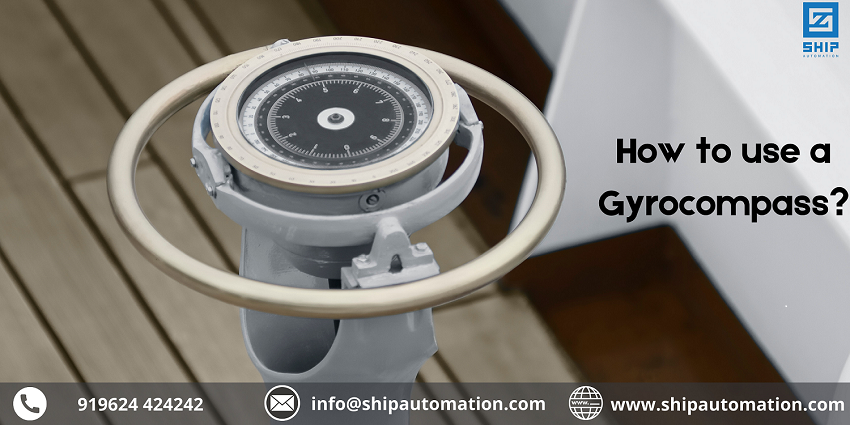Gyro Compass is a navigational compass with a gyroscope motor that detects the true north direction along the earth’s surface without relying on magnetism.
A gyroscope is made up of gimbals that include a spinning wheel or rotor that allows movement along three mutually perpendicular axes: the horizontal axis, the vertical axis, and the spin axis. When spun quickly and without friction, the gyroscope creates gyroscopic inertia, which causes it to spin in the same plane indefinitely. The quantity of gyroscopic inertia is determined by the wheel or rotor’s angular velocity, mass, and radius.
When a gyroscope is placed at the equator with its spin axis pointed east-west, gyroscopic inertia will tend to maintain the plane of rotation constant while the earth rotates on its axis. It is the gyroscope, not the earth, that seems to revolve to the spectator. The horizontal earth rate, which is greatest near the equator and zero at the poles, is the result of this process.
Construction of a Gyrocompass
A gyrocompass as discussed earlier is a very important instrument and it is made up of the following units
Master Compass
With the use and help of a gyroscope, it discovers and maintains the correct north reading.
Repeater Compass
Receive and indicate the correct direction transmitted electrically from the Master Compass
Course Recorder
A moving strip of paper records the movement in real time.
Control Panel
The control panel regulates the electrical operation of the system and monitors the operating condition using an appropriate metre.
Voltage Regulator
Keeps the ship’s supply of electricity to the motor generator consistent.
Alarm Unit
Indicates that the ship’s supply has failed.
Amplifier panel
The follow-up system is controlled via the amplifier panel.
Working of a Gyrocompass
Gyro compasses are not affected by external magnetic fields that deflect regular compasses. The autonomously propelled structure known as ‘Phantom’ travels with the ship as it changes direction, but the rotor system continues to aim northward.
Because of this misalignment, it can send a signal to the driving motor, which then pushes the phantom step back into the rotor system along a route where the phantom may have spanned merely a fraction of a degree or many degrees of the compass circle.
How to use the Gyrocompass
A gyrocompass is not prone to variation or deviation since it is not affected by magnetism. Any inaccuracy is continuous and equal around the horizon, and it can frequently be decreased to less than a degree, thereby eliminating it.
Unlike a magnetic compass, it can send a signal to repeaters placed strategically about the vessel.
It does, however, need a steady source of reliable electrical power, and if power is interrupted, it takes many hours for the meridian to re-establish itself before it can be used. Before turning on the electricity, align the compass with the meridian to shorten this duration.
The gyrocompass is typically located on the wheelhouse as close as possible to the center of the roll, pitch, and yaw of the ship, thus minimizing errors caused by the ship’s motion. Repeaters are located at convenient places throughout the ship, such as at the helm for steering, on the bridge wings for taking bearings, in after steering for emergency steering, and other places. The output can also be used to drive course recorders, autopilot systems, plotters, fire control systems, and stabilized radars. The repeaters should be checked regularly against the master to ensure they are all in alignment. The repeaters on the bridge wing used for taking bearings will likely be equipped with removable bearing circles and azimuth circles.

